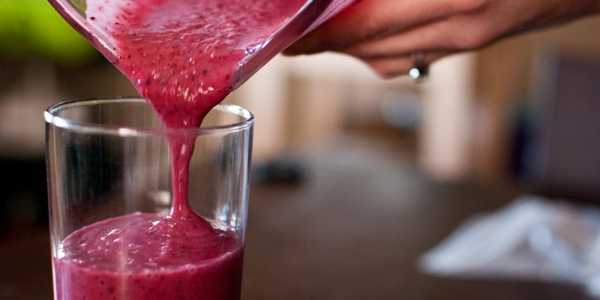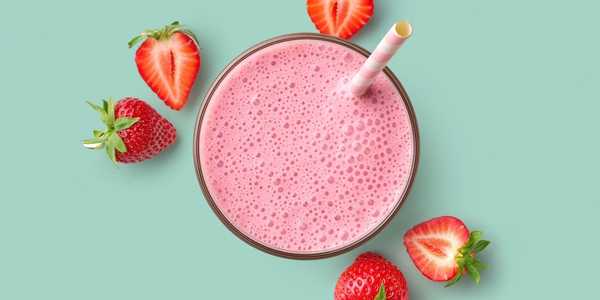5 Reasons Your Smoothies Are Watery and How to Fix Them?
Have you ever prepared a smoothie that ended up more like fruit-flavored water? It's frustrating, right? This is a familiar issue many of us have encountered when attempting to make a simple, healthy beverage.
Have you ever prepared a smoothie that ended up more like fruit-flavored water? It's frustrating, right? This is a familiar issue many of us have encountered when attempting to make a simple, healthy beverage.
Thick and liquid smoothies can ruin your morning or your post-workout snack. But do not worry—this article has solutions for correcting this problem.
This post will describe why your smoothies may be thin and how to thicken them into a creamy, yummy beverage.
Below are five major causes of watery smoothies and how you can correct them in the simplest ways possible. Prepare yourself to turn your liquid smoothie into a smooth one.
The Importance of Smoothie Consistency

You also need to get the thickness of your smoothie just right, not just for aesthetics. It plays an important role in taste and nutrition. In other words, a good smoothie should be thick and not dilute to become watery.
This texture makes you feel you have eaten your fill and are sated.
Richer smoothies are less tasty than thinner ones.
When your smoothie is too thin, you may not finish it, and you will lose out on the nutrients your body needs to be healthy.
The thick consistency of the smoothie also takes more time to pass through the body's digestive system. This means that the vitamins and minerals will be available to the body for longer, hence maximum absorption.
Thickness can also influence the level of satisfaction one gets while taking the smoothie. This form makes healthy foods more appealing, as they feel more like a desert when they are creamy.
Also, if the smoothie is thicker, it will maintain the temperature and stay cold longer.
Good consistency will enable a better presentation of the various flavors of the food. The requirements include that when the ingredients are well mixed, one is assured of a balanced taste in every part of the mouthful.
This also makes the consumption of your smoothie enjoyable while ensuring that you get all the nutrients that you intend to derive from it.
Common Smoothie Ingredients and Their Effects
Smoothies can turn out a disaster or be a great success, depending on what is put into the blender. Let's look at how common items affect your blend:
Fruits: Frozen fruits are smoothie champions. They thicken things up and bring in a natural sweetness without diluting things. Bananas, mangoes, and peaches should give the food a creamy feel.
Leafy Greens: In large quantities, the smoothie tastes more like a liquid salad when it is healthy for you. It is recommended that you use them occasionally for the best outcome.
Liquids: Liquids that thin out your mix include milk, juice, or water. However, add only a little, as this may alter the texture and taste of the cake. Kefir or yogurt could add the tang without adding too much water.
Avoid plenty of ice because it dilutes the juice and turns your smoothie into a watery liquid. Avoiding or using only a small amount is best, or you can opt for frozen fruits.
Thickeners: Substances like nut butter, oats, or Greek yogurt can add creaminess to a recipe. They also increase the nutritional value of the foods and help keep people satiated for longer durations.
Flavor Boosters: Spices, extracts, or just a pinch of salt can improve taste without affecting the texture of the food. You can utilize these to adjust your smoothie's flavour to the required sweetness or acidity level.
Understanding how these ingredients work together helps you create the perfect smoothie consistency every time.
5 Reasons Your Smoothies Are Watery and Their Solutions
Ready to upgrade your smoothie game? Let's tackle the most common issues that lead to watery smoothies. Here are five key reasons your blends need to be fixed, along with simple fixes, to get that perfect creamy texture.
Follow these tips, and you'll be whipping up restaurant-quality smoothies quickly.
1. Using Too Much Ice
Ice cubes appear to be a perfect solution to both, making the smoothie cold and thick simultaneously, but instead, you get a watery drink. When the ice begins to melt, it discolors the beautiful mix you made, leaving you with a bland drink.
Fix: Instead of using normal ice, use frozen fruits. This chills the ingredients, sweetens them naturally, and thickens the smoothie. Frozen bananas are particularly ideal, especially when you want a dish with a creamy feel.
If you include ice, do so only after mixing the other ingredients and blending for a short time.
2. Not Enough Frozen Fruit
Fresh fruits are tasty but impart a watery texture to your smoothie. Without the frozen elements, your smoothie might not have the thick, icy feel you prefer.
Fix: Frozen fruit should be your smoothie's BFF. The store should also have frozen fruits such as berries, mangoes, and pineapples. These not only make the smoothie thick but also very flavorful.
Pro tip: To make a smoothie, use ripe, peeled, and frozen bananas, as they blend well in almost all recipes.
3. Incorrect Blending Order

Adding your ingredients incorrectly in order will only create a problem with blending. This usually results in large lumps of unblended fruit suspended in a pool of liquid, which is not very appealing to the eyes.
Fix: They try to layer their ingredients to enhance each other's properties. Liquids should be first at the base of the blades. This assists in creating a vortex for improved blending.
After that, you can stir in your leafy green vegetables if you use any. Next are the softer fruits, and last are the frozen fruits or ice cream. This order helps ensure that the material is well blended and of even consistency each time it is needed.
4. Lack of Thickening Agents
Without ingredients that add body to your smoothie, you'll likely have a thin, juice-like consistency instead of a rich, creamy drink.
Fix: Incorporate natural thickeners into your recipe. Greek yogurt, nut butter, oats, chia seeds, or avocado are excellent choices.
These not only improve texture but also boost nutritional value. Start with a small amount and adjust to your liking; a little goes a long way.
5. Overuse of Watery Ingredients
Going overboard with liquids is easy, especially if you're worried about your blender getting stuck. Too much juice, milk, or water can quickly turn your smoothie into soup.
Fix: Start with less liquid than you think you need. You can always add more if the blend is too thick. Use thicker liquids like kefir or coconut milk instead of water or juice. These add creaminess without watering down your smoothie.
Remember, many fruits release liquid as they blend, so factor that in when adding extra fluid.
Mastering the Perfect Smoothie Consistency
With these tips, you can fix watery smoothies. Remember, creating the ideal blend is a mix of science and art. Experiment with frozen fruit ratios and thickening agents to find your perfect texture.
Pay attention to blending order, and don't shy away from flavor boosters like cinnamon or vanilla. If you're still struggling, try freezing smoothie bases in ice cube trays for quick thickening.
Most importantly, trust your taste buds. The best smoothie is one you enjoy drinking. Keep practicing, and soon you'll blend like a pro, crafting delicious, perfectly textured smoothies every time. Happy blending!
Frequently Asked Questions
Q: Can I make a thick smoothie without frozen fruit?
Ans: Yes. Use thickeners like Greek yogurt, nut butter, or oats. Chill your ingredients beforehand and use less liquid. Blend well, then add ice at the end if needed.
Q: How do I fix a smoothie that's already too watery?
Ans: Add more frozen fruit, a scoop of protein powder, or a spoonful of nut butter. Blend again. If it's still too thin, freeze it slightly and re-blend.
Q: What's the best liquid to use for smoothies?
Ans: Use milk (dairy or plant-based) for creaminess or coconut water for a lighter option. Avoid too much plain water or juice, which can make smoothies watery.